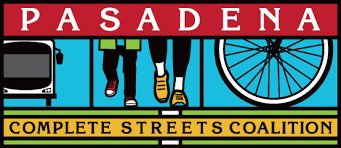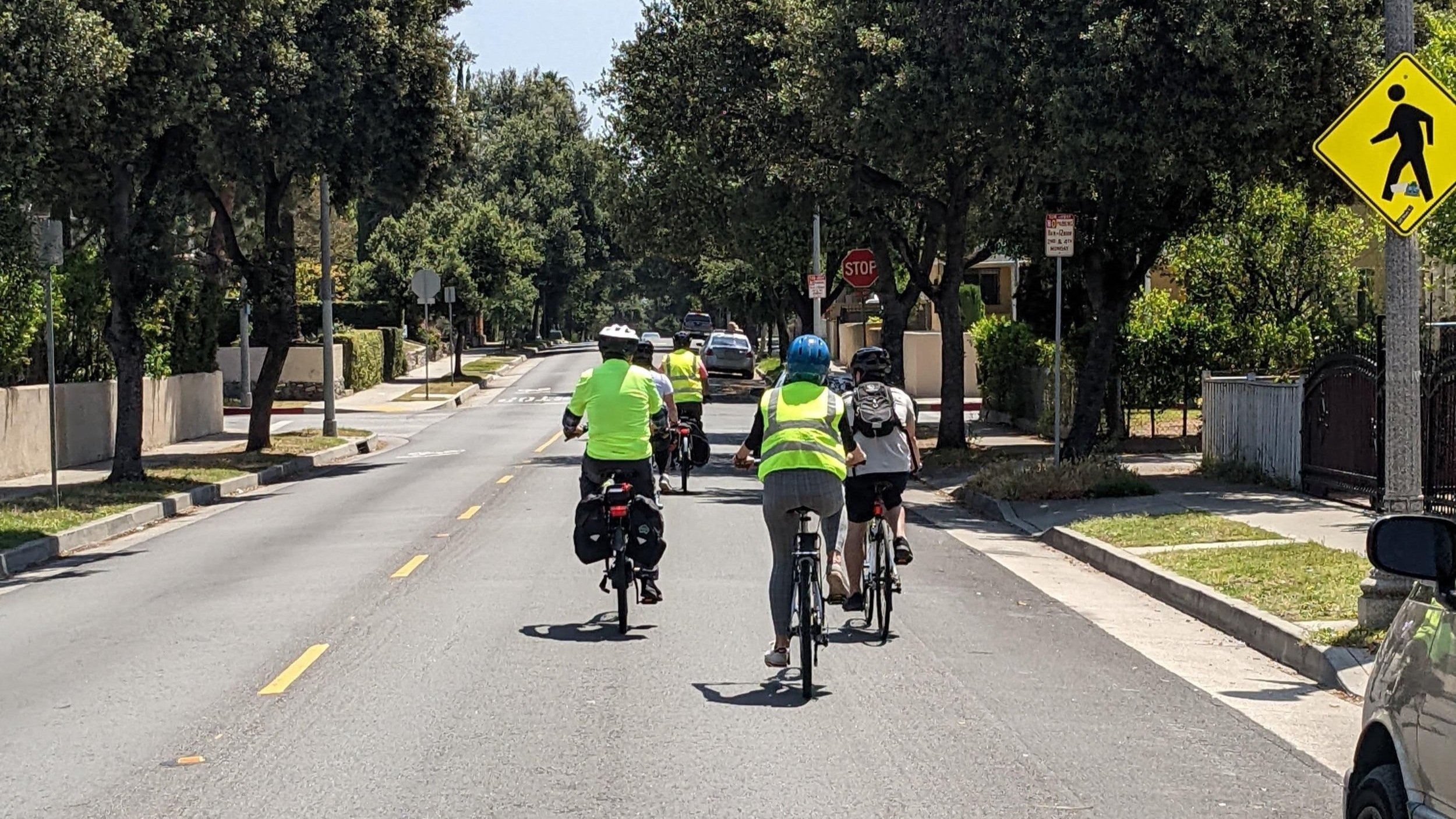All Ages & Abilities Greenways
Walking or riding a bike for everyday trips in Pasadena should be safe and comfortable for everyone! Women, children, seniors, people with disabilities, and low-income residents all deserve safe streets.
Sign the Petition!
I believe streets should be safe for everyone! I stand with the Pasadena Complete Streets Coalition in calling for Pasadena to implement an All Ages and Abilities safety standard for the four North-South Greenways on El Molino, Wilson, Sierra Bonita, and Craig as described in the national design standards manual “Designing for All Ages and Abilities.”
What are Greenways?
Pasadena is creating 4 north-south Greenways (El Molino, Wilson, Sierra Bonita, and Craig) that prioritize safe walking and biking, compared to roughly 40 north-south streets that prioritize cars (including Fair Oaks, Arroyo Parkway, Lake, Altadena Dr, …).
A short Greenway already exists on Marengo Avenue between Orange Grove and Washington Blvd. The four planned Greenways are now funded by Metro, and will be a small, but important set of neighborhood streets. Given the number of high volume streets already available to drivers, we must build the Greenways to a high standard of safety and comfort.
A meaningful All Ages & Abilities network requires that the small fraction of street space prioritizing active transportation have the highest standards of comfort and safety. Having high safety standards on neighborhood streets will not prevent driving or parking in Pasadena. We can have safe streets AND preserve access for drivers.
NACTO presents clear criteria for how to design a Greenway for All Ages and Abilities, including:
Car speeds of less than 20 MPH with volumes under 2000 vehicles per day, or
Car speeds of less than 25 MPH with volumes under 1500 vehicles per day
Pasadena’s Greenways should adhere to this national standard.
Why build safe neighborhood streets?
Thousands of people walk, bike, scooter, skateboard, and use micro-mobility devices in Pasadena. People choose active transportation for a variety of reasons: for reliable transportation to work, school and shopping; for cleaner air; to stay active; or to save money. These options provide fast, affordable transportation to get around our city and enjoy the outdoors.
In addition, there are more people in Pasadena who would like to walk or ride a bike, but drive instead, because the streets seem unsafe - perhaps you are one of these people yourself! In national surveys, half of Americans are in this category - reporting they would ride a bike more often if they had safe places to do so. That’s potentially a lot of trips by bike, and a lot less car traffic on our streets.
Research shows that active transportation is:
Good for Business
People walking and biking are more likely to eat out and shop.
Multiple studies show that high-quality bike routes increase sales at businesses and restaurants
Good for Families
Giving kids safe routes to schools can reduce drop-off lane traffic
Bicycling in Pasadena is often faster and more flexible than waiting for a bus.
Good for Equity
Creating safer options means creating affordable options, making transportation equitable for Pasadena residents of all income levels.
Owning a car costs an average of $7,000 - $10,000 per year. Working families in Pasadena sometimes have to choose between fixing a car or feeding their families.
Using all of our street space for cars is deeply unjust, ignoring the transportation needs of thousands of residents.
Good for Drivers
Cities with safe bike routes often have improved traffic flow for cars; traffic moves better when pedestrians, cyclists and drivers are separated.
Those cities that have safe bike routes experienced fewer collisions for all road users, particularly motorists.
Good for Health and the Environment
Transportation is the largest source of greenhouse gas emissions in Pasadena.
More options for safe walking and biking will mean cleaner air and less noise pollution.
Regular moderate exercise, like biking and walking, have major health benefits, including: reduced risk of obesity, heart disease, and depression.
Building the Greenways to comply with NACTO criteria for All Ages & Abilities Greenways will make these streets safer for everyone. Collisions will be reduced, improving safety both for drivers and pedestrians. Businesses along the corridors will have a more pedestrian-friendly street leading to their front doors. And, most importantly:
Pasadena residents will love safe, quiet neighborhood streets!
See Greenways in Action
Documents
Safe Neighborhood Streets Petition (500 signatures of support)
Wilson for All (200 signatures, mainly from the Caltech community)
Referecnes
NACTO All Ages and Abilities Design Guide - PDF
NACTO Research on protected bike lanes
New York City Department of Transportation report on Columbus Avenue Parking Protected Bicycle Path
Wesley E. Marshall, Nicholas N. Ferenchak. Why cities with high bicycling rates are safer for all road users. Journal of Transport & Health, 2019; DOI: 10.1016/j.jth.2019.03.004
NACTO City Limits, Speed Kills
Bloomberg News, “When Adding Bike Lanes Actually Reduces Traffic Delays” by Eric Jaffe, (2014)
Bloomberg CityLab, “No, Bike Lanes Don’t Hurt Retail Business”, (2013)
Protected Bicycle Lanes in NYC, New York City Department of Transportation (2014)
CBC news “Love them or hate them, research offers financial case for big city bike lanes” (2019)
Cycling Facts, Lucas Harms & Maarten Kansen, Netherlands Institute for Transport Policy Analysis (2018)
Average annual cost of car ownership, AAA (2022)
Raising Kids Would Be So Much Better Without Cars, by Erin Sagan, Romper (2023)


